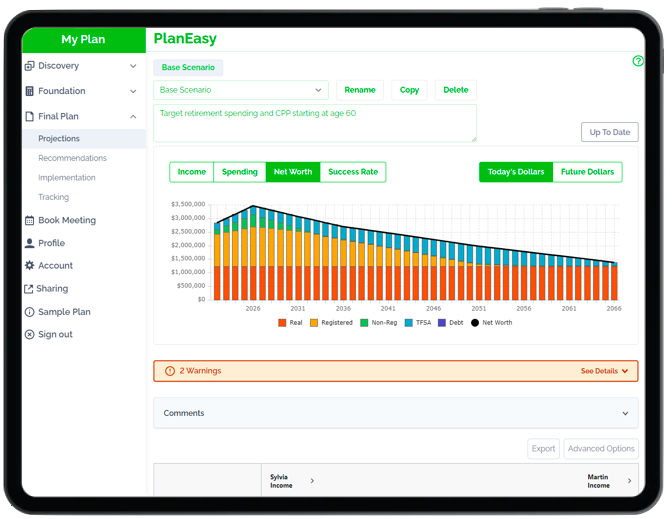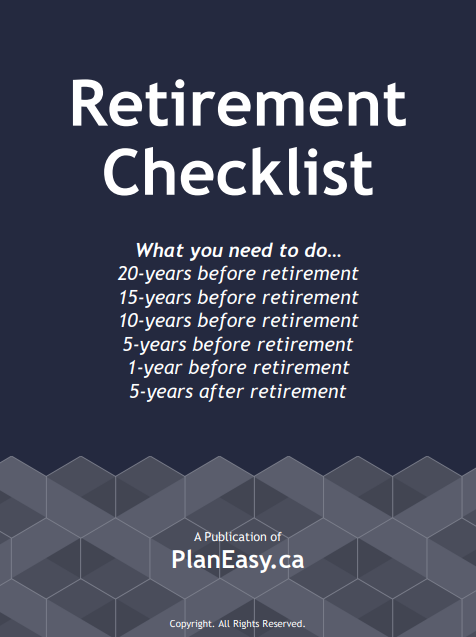Avoiding The Risk Of A Long And Healthy Life
There are many different risks when it comes to retirement, investment risk, inflation rate risk, spending risk, but one risk that isn’t talked about very often is the risk of living a long and healthy life. It may seem odd to call this a risk, but from a financial planning perspective, a long and health retirement can dramatically increase the risk of running out of money in the future.
According to the guidelines from the Financial Planning Standards Council of Canada, for a couple who is currently 55, there is a 25% chance that either partner in a couple will live to age 98 and there is a 10% chance that either will live to age 101.
Living a long and healthy life isn’t some obscure risk… for pre-retirees the chance of living into their mid 90’s is around 25%!
This risk becomes even greater for those aiming for early retirement in their 50’s or even 40’s. Retiring at age 55 could mean a 43+year retirement period for 1 in 4 couples and a 46+ year retirement period for 1 in 10 couples.
With such a long retirement period, and such a high possibility of reaching age 90+, we want to ensure that we’re taking steps within our financial plans to avoid the risk of a long life.
There are a few things that anyone can do to avoid this risk…
Target A Safe Withdrawal Rate Below 4%
The idea of a safe withdrawal rate has been around for quite a while now. The original analysis that produced the 4% rule was done with a 30-year retirement period. So, for longer retirement periods we may want to be a bit more conservative with our withdrawal rate.
A safe withdrawal rate of 4% means we can take 4% from our original investment principal, adjusted for inflation each year, and have a reasonably high chance of not running out of money in 30-years. But what if you retire early and expect to have a retirement period of 40-years or more?
Targeting a lower withdrawal rate, between 3.0% and 3.5%, will provide a higher likelihood of reaching old age without running out of money.
A lower withdrawal rate has a higher chance of weathering long recessions or depressions. There is a higher likelihood of making it through a 10-15 year period of mediocre investment returns with a lower withdrawal rate.
But… there is no guarantee. Investment fluctuations in the future could be even more extreme than what we’ve seen in the past. If that’s the case then we want to have other ways to avoid the risk of a long life.
Delaying CPP Until Age 70
For those with significant investment assets, delaying CPP to age 70 and drawing down RRSPs or other financial assets instead can essentially turn a finite financial resource into an inflation adjusted annuity that lasts a lifetime and is backed by the government.
Delaying CPP to age 70 increases it by over 220% versus taking it at age 60. Taking CPP early means it will be reduced by 0.6% per month before age 65. Taking CPP at age 60 means payments are just 64% of their age 65 level. Conversely, delaying CPP means it will increase by 0.7% per month after age 65. Taking CPP at age 70 means payments are 142% above their age 65 level.
Delaying CPP until age 70 has some serious advantages. The benefit of delaying CPP to age 70 is that we’ve reduced exposure to investment volatility by drawing down investment assets in our 60’s. We’ve traded variable investment assets for an inflation adjusted “government annuity”.
The downside of delaying CPP is that it may take until someone’s late 80’s or early 90’s to reach breakeven and may face large reductions in a survivorship scenario.
Watch The Video
Purchase An Annuity
Annuities have a similar benefit as delaying CPP. When purchasing an annuity, we’re trading variable investment assets for a guaranteed income for life. This greatly reduces the risk of a long life.
Annuities are purchased from insurance companies. These insurance companies invest your assets and use the investment proceeds to guarantee a steady stream of income for the rest of your life. They take on the investment risk and as a result get to keep any positive investment returns but have to cover the gap if investment returns are low or negative.
One downside with annuities however is that they are typically not adjusted for inflation. This means an annuity will help reduce investment and longevity risk, but not inflation rate risk.
Annuities come in many shapes and sizes. There are joint life annuities for couples, cost of living adjusted annuities, guarantee periods etc.
Purchasing an annuity can happen at any time and there can be advantages to purchasing an annuity later in life.
Defined Benefit Pension (With Inflation)
If you’re lucky enough to have a defined benefit pension from your employer that has inflation indexing this is one of the best ways to avoid the risk of a long life. Defined benefit pensions provide a steady stream of income for life and the inflation adjustment helps ensure the pension does not lose purchasing power over time.
Some pensions are not indexed to inflation. This type of defined benefit pension is slightly less valuable for avoiding the risk of a long life because payments lose value over time as the price of goods and services increase but pension payments remain the same.
But if you’re lucky enough to have a defined benefit pension with inflation indexing then you’ve got a very good way to avoid the risk of a long life.
Spending Flexibility
For the average retiree who needs to support the majority of their retirement income from investment assets, having some spending flexibility within their retirement budget can go a long way to avoiding the risk of a long life.
One of the largest risks in a retirement plan is a poor series of investment returns over a 10-20 year period. This “sequence of returns risk” happens when we experience a period of poor investment returns while drawing investment income for retirement spending.
Drawing on investment assets during these periods can significantly reduce the size of an investment portfolio and can increase the likelihood of running out of money in the future.
This risk can be reduced if we have some flexibility within our retirement spending. Sometimes a spending reduction as small as 10% during a period of mediocre investment returns can be enough to avoid the risk of running out of money.
Blog post continues below...
Advice-Only Retirement Planning
Are you on the right track for retirement? Do you have a detailed decumulation plan in place? Do you know where you will draw from in retirement? Use the Adviice platform to generate your own AI driven retirement decumulation plan. Plan your final years of accumulation and decumulation. Reduce tax liability. Estimate "safe" vs "max" retirement spending. Calculate CPP, OAS, GIS, CCB etc. And much more!
Start your retirement plan for just $9 for 30-days!
You deserve financial peace of mind as you enter retirement. Start planning now!

Understand That Nothing Is Guaranteed
Although we’ve provided a few ideas for avoiding the risk of a long life there are really no guarantees. We have no way of predicting the future so it’s advisable to remain flexible with your plans and re-evaluate them regularly.
Building a solid retirement plan and then updating it regularly is one of the best ways to avoid the risk of a long life. Refreshing your plan to reflect actual investment returns, actual spending, actual tax and benefit rates etc will help ensure you’re making changes when and if necessary. It’s the best way to provide peace of mind in retirement.
Join over 250,000 people reading PlanEasy.ca each year. New blog posts weekly!
Tax planning, benefit optimization, budgeting, family planning, retirement planning and more...
Join over 250,000 people reading PlanEasy.ca each year. New blog posts weekly!
Tax planning, benefit optimization, budgeting, family planning, retirement planning and more...








0 Comments